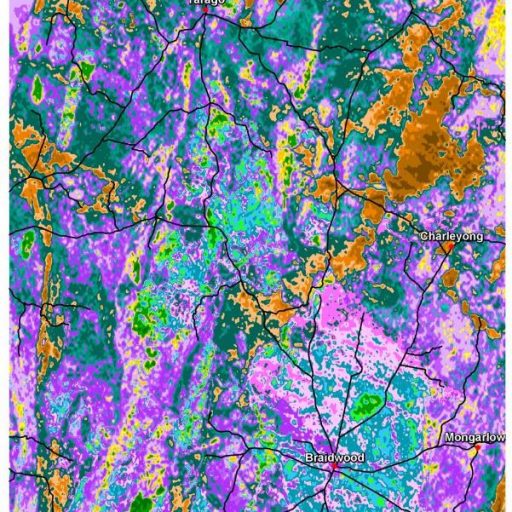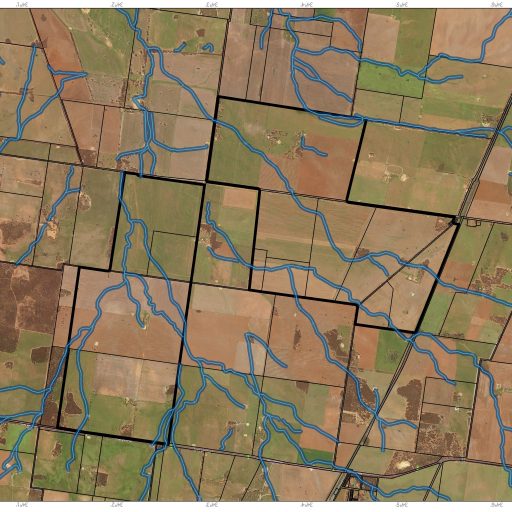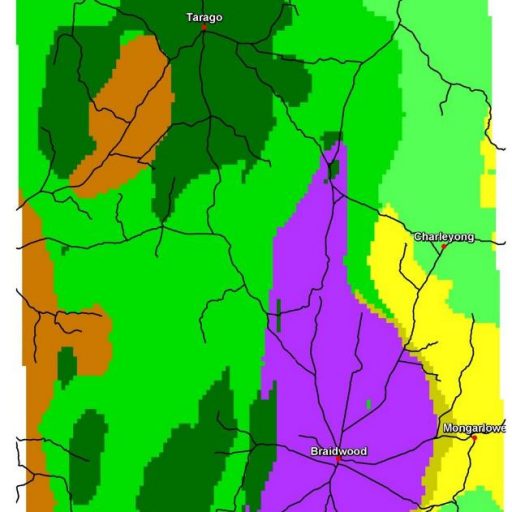A client has a choice of map types to be used in the groundwater exploration project. However, generally these choices will be guided by a Phi’on consultant based on airborne data coverage for the area, the size of the property and groundwater needs for the client’s enterprise. Once the maps are produced by Phi’on, the client will be sent copies of the maps by email. The client will then book (bookings@phion.com.au) a telephone consultation time with a Phi’on scientist. These maps will be further used onsite to brief the client and to guide the field work to locate the groundwater bores (see images below).
Digital elevation map (DEM)

The terrain, ie. the form of ridges and valleys, can be a reasonable indicator of rock fracturing, including the direction and extent of fracturing. This digital elevation map (DEM) can also be used to define the direction of the surficial drainage system (eg. creeks and rivers), catchment boundaries slope and aspect.










